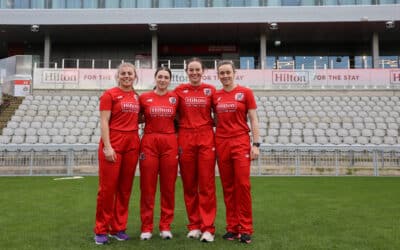Jonathan Moran, Director at Better Placed Tech, explores the merits and best approaches to remotely onboard new junior tech appointments.
Ask a dozen CEOs for their thoughts on hiring people straight out of higher education, and you’ll probably get thirteen different responses. Some will speak highly of junior hires with their bright attitudes and their ready-for-molding minds; whereas plenty of others see their untested nature as too much of a risk.
Probably because of this perceived risk, my years of recruitment have seen me mostly work with businesses who limit junior hires to a small number of positions. That’s why I decided to catch up with a CEO who not only exclusively hires junior developers, but has chosen to pivot towards a fully remote business model even after the pandemic is over.
Why hire junior staff?
Tim Langley is Founder and CEO of CANDDi, a SaaS company based in the heart of Manchetser’s Northern Quarter. “I think the main reason we’ve had so much success with hiring juniors is because they tend to be at that part of life where they’re keen to throw themselves into something”, he explained. “It also doesn’t hurt that as a quirky little tech start-up, we have a great culture for onboarding young people and helping them to grow”.
From my side, I’ve found that a lot of the downside of hiring juniors can be eliminated by a solid recruitment process. The very best ‘bedroom coders’ don’t spend their lives trawling through job boards, so I’m always checking out local tech meet-ups (virtually, nowadays!) and keeping my ear to the ground on GitHub. As Tim puts it: “What you’re really looking for is someone who may be untested, but who actually has years and years of experience pursuing their own projects”.
So, what about onboarding?
Or, more accurately: how the hell do you do it during a pandemic?
There’s always going to be an element of hand-holding needed with fresh junior hires. Even the best bedroom coder in the world needs to learn how to speak the ‘language’ of the team they’ll be working in. “Put it this way”, said Tim, “we’re a 12-year-old business. Pretty soon, our base code is going to be older than the junior devs working on it!”.
In the place of direct supervision, Tim has made good use of pair work at CANDDi to onboard his fresh hires effectively. “Juniors are buddied up with a more senior team member for a few weeks to understand how we work. In the case of our content writers, we even have them write blogs about their first weeks in the business – it’s a great way to get them involved from day one”.
From the recruitment side, fully remote roles provide an interesting challenge. Pre-pandemic, I’d be looking at responses just from people based in Manchester; now I’ve got a potential pool of the entire UK. Of course, a CV often only tells half the story, so before recommending candidates I also check up on how active they are in code repositories and the wider community.
If my time in recruitment has taught me anything, it’s that there aren’t really any set-in-stone rules for finding the right person to fill a role. But while CANDDi’s experience may not necessarily mean every company should pivot to an exclusively junior hiring process, it certainly provides some insight into the merit of younger candidates during the pandemic.
Better Placed is a Prolific Partner. To learn more about becoming a Prolific North Partner, please request more information here.









